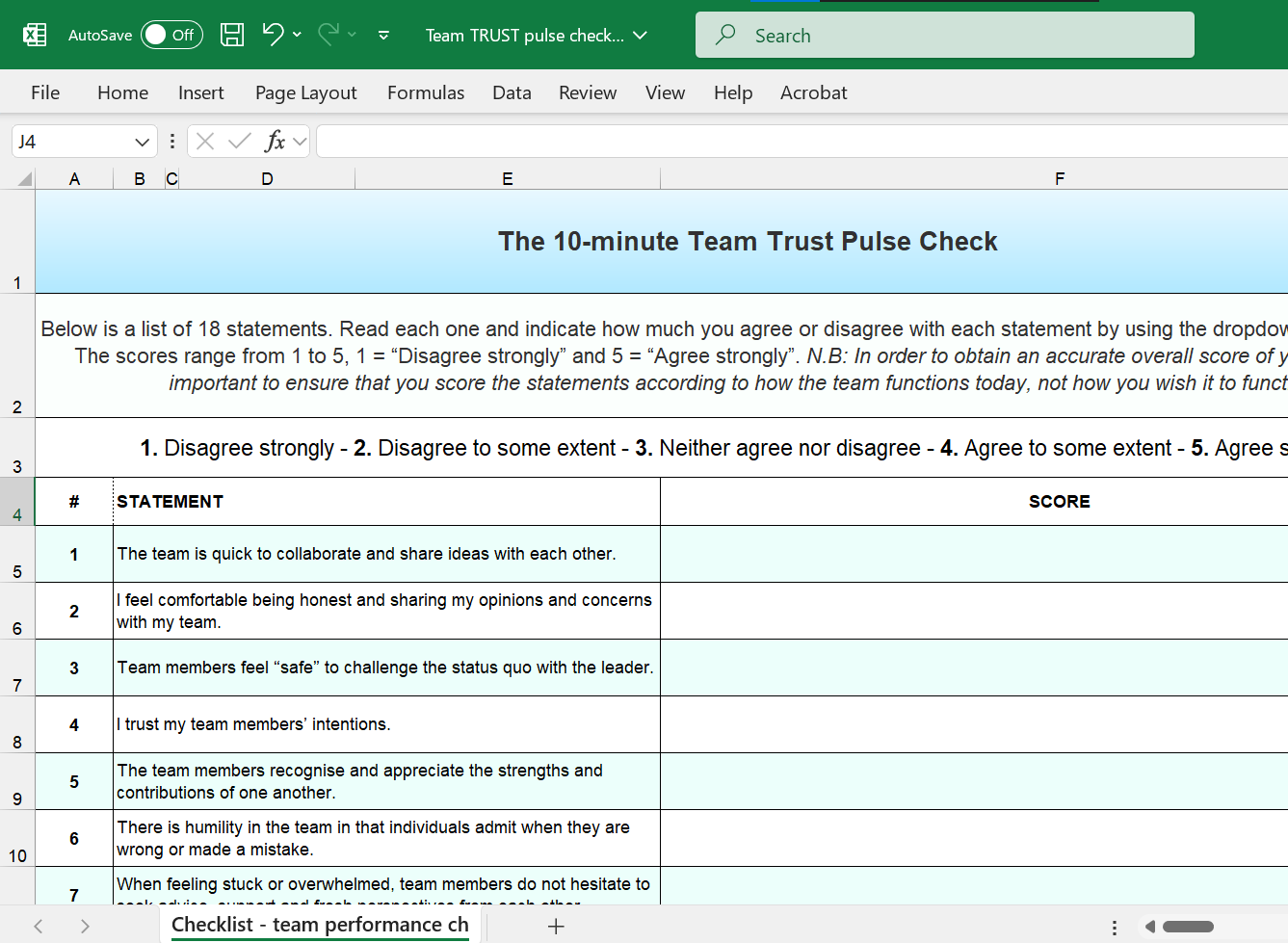
Trust is usually a very sensitive or emotionally charged subject, if not taboo, both at work and beyond. This is because it is generally poorly understood. Even the word “trustworthy” can be used to determine how a person perceives someone’s worth. Such labelling of a person is rarely useful first and foremost because of varying layers and degrees of trust from one context to another and from one person to another.
If you were to ask your team members to write down the definition of Trust and then share it with the rest of the room, I can guarantee you that you will have as many definitions as people sitting around the table.
This is why teams love my THRICE® model: It breaks down the “romantic” concept often built around trust: Rather, it provides the 6 key ingredients of trust, enabling people to reconsider what trust is actually made of. It sparks explorative conversations and facilitates more meaningful exchanges which would have otherwise turn out to be defensive or non-productive.
Here is one very simple and fun exercise which you can do with your team, at your next team meeting for instance.
What you need:
Draw the Model on a A3 flip chart ahead of your meeting and prepare enough coloured hand-outs to go around. Ensure that you respect the order of the acronym THRICE when you present each one of the six ingredients.
Hand out two different coloured post-it notes to each team member. Ask them to answer the following questions by identifying the ingredient and writing it on the corresponding post-it note.
Questions:
A. the one that they feel is displayed the strongest in the team, and
B. the one that they feel is displayed the weakest in the team.
Note: Make sure that the colour-coded post-its are made very clear for everybody so that colour A. represents the strongest ingredient and colour B. represents the weakest ingredient.
Once each member has written down the ingredient on the respective post-it, they will then place it in the respective container.
Once all team members have completed the exercise, ask a volunteer to come to the front to choose container A and read out all the answers and note them on the flip chart. Then do the same again with Container B. Usually, Containers A and B each have a dominating Trust ingredient, the strongest and the weakest, respectively.
Both outcomes are of equal importance. Discussing why the team feels an ingredient is weakest is as significant as discussing why the strongest ingredient is felt. The key here is to “de-personalise” the outcome and focus on behaviours rather than the people themselves displaying the behaviours.
Open-ended questions can be a great way to enable insightful conversations. Here are a few examples you could choose from:
“What behaviours are being displayed that explain why this ingredient is the strongest / weakest?”
“What are people saying to each other which feeds this particular ingredient and makes it the strongest in the team?”
“How does this strongest / weakest ingredient amongst the team members make you feel?”
“What are you saying or doing that you wouldn’t otherwise say or do if this ingredient wasn’t the strongest / weakest?”
“What must we consciously commit to as a collective to keep this ingredient strong?”
“What do you individually commit to doing towards the rest of the team in order to strengthen the weakest ingredient?”
“What other ingredient would you like to see more of to improve the level of trust in the team?”
This is both a highly engaging and fun exercise and promptly elicits curiosity throughout the group. It opens up conversations and encourages people to address the team’s diagnostic with an explorative approach.

Provide us with your Name and Email.